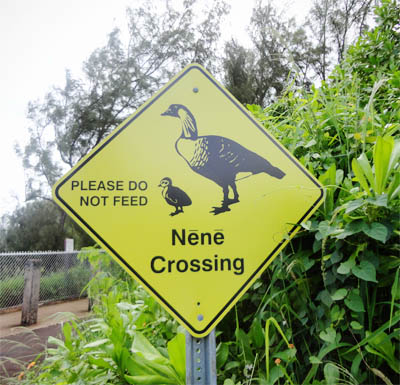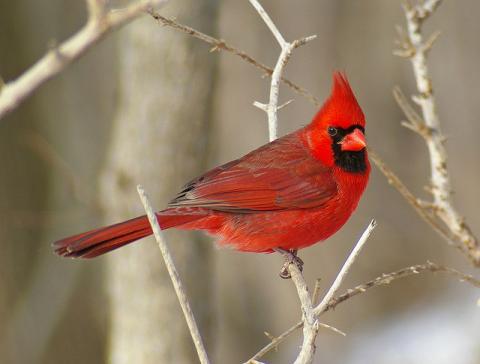I was ten years old when my father moved our family to Kauai, one of the islands that make up the state of Hawaii. My time on the island introduced me to a wide variety of wildlife that I had never experienced. Its natural beauty is immense. The sand beaches are the silkiest on earth. The sunsets are otherworldly. And, the view; that wonderful view from the shore stretches for miles. It is magnificent.
When my family first arrived at the island, I distinctly remember road signs that depicted a duck-like bird. They were everywhere, especially in the area around the Hanalei Bridge. I never paid any real attention until I saw the necessity of these road markers in real-time use.

Image by I’m at the Library
It was the day of the Annual Historic Koloa Plantation Days Parade. My parents took my little brothers and me to watch the event on Koloa Street. Amid the floral floats, decorated horses, and vintage cars, a few special birds decided to have a parade of their own. On the sidewalk, a Hawaiian Goose and her goslings marched through the thick crowd of people. This was my first time seeing one of my favorite birds, the Nënë.

Image by The Cornell Lab of Ornithology
The Nënë was named the Hawaiian state bird in 1957. This bird is a trademark of Hawaiian heritage and closely protected by the Hawaiian state government. Currently, Nënë are listed as an endangered species. The species population has experienced a downward trend during the past century due to increased human development on the Hawaiian Islands. The Garden Island states, “Statewide, the total estimate for the population is 3,159, up from the 2017 statewide estimate of 3,146. Compare those statewide totals from the ones calculated nearly 10 years ago; the population was estimated 1,900 in 2008.” Thankfully, the species is gaining public aid with activists taking precautions to ensure that they will never become extinct. However, the increased numbers of Nënë means more danger zones for the geese to wander in urbanized areas.
Nënë have successfully adapted to the Hawaiian area. Although the species originated from the Canadian Goose, there are few similarities. For one, life on the Hawaiian Islands has reduced their wing size over the decades. This allows for only short flights. The species no longer requires migration due to the steadily rising temperatures. Water habitats are not vital to the Nënë. The birds are categorized as waterfowl, meaning they are similar to ducks and other large aquatic birds that are hunted for game. While they are considered aquatic animals, Nënë have adapted to not needing freshwater habitats due to a shortage in their ecosystems.
The beautiful Hawaiian Goose is a showstopper. It’s tall stature and graceful movements surely make it beloved by the Hawaiian community. Remember to watch for Nënë crossings if ever on Kauai, Maui, or the Big Island. These birds are precious gifts of nature and reserve the right to flourish in the wild.



